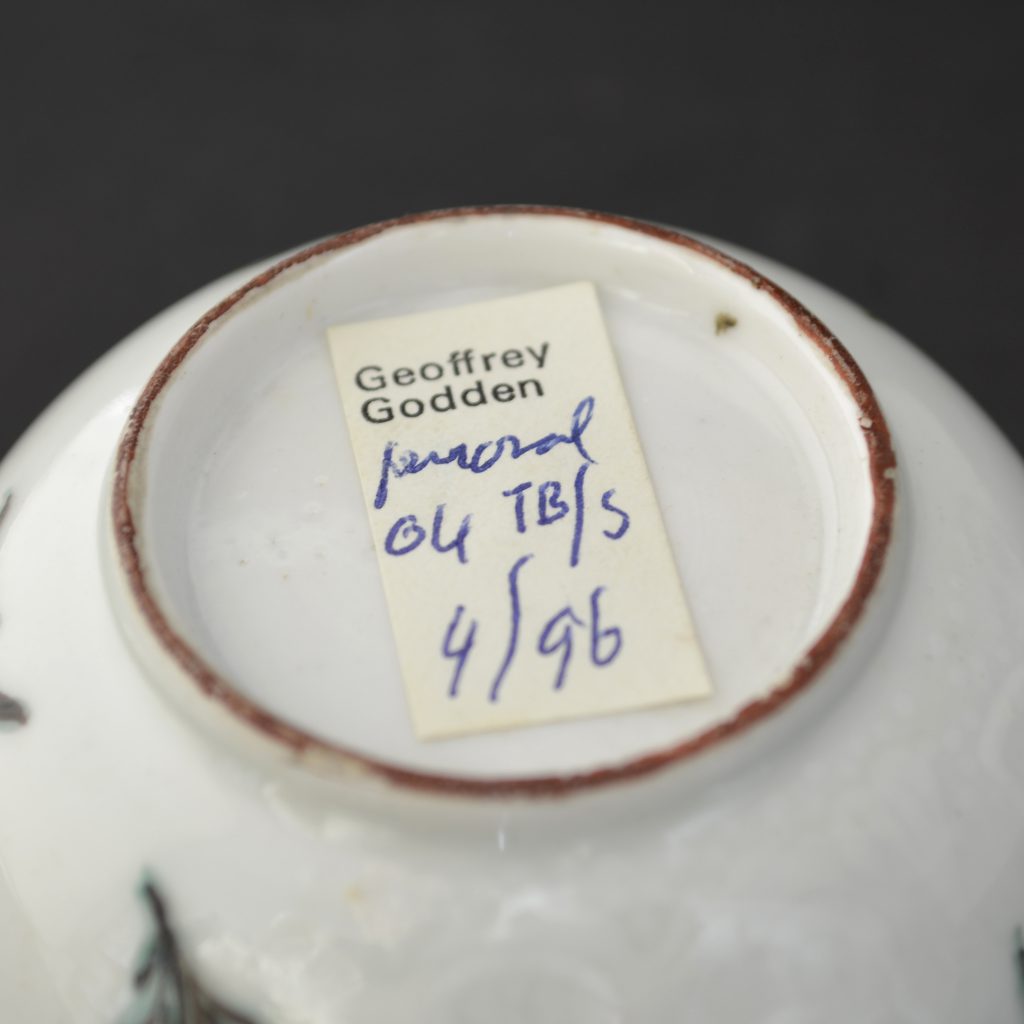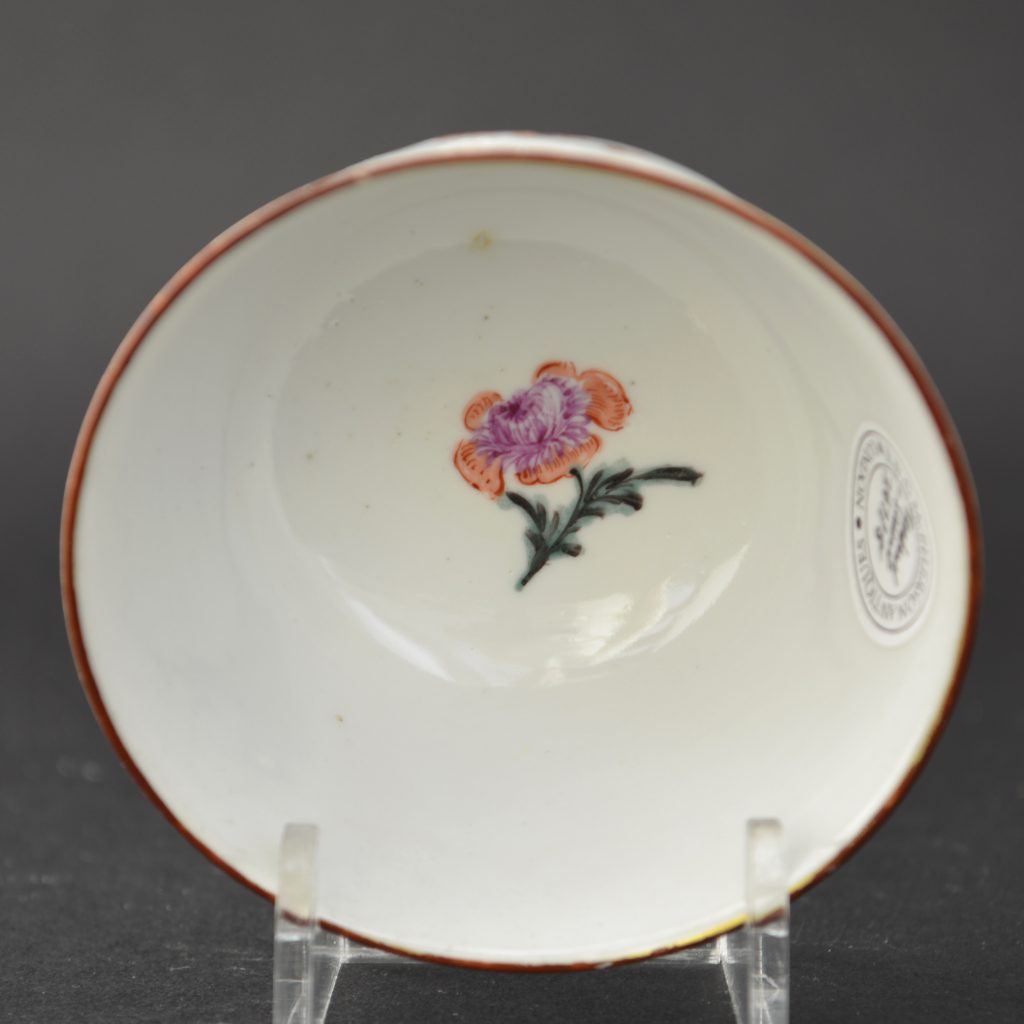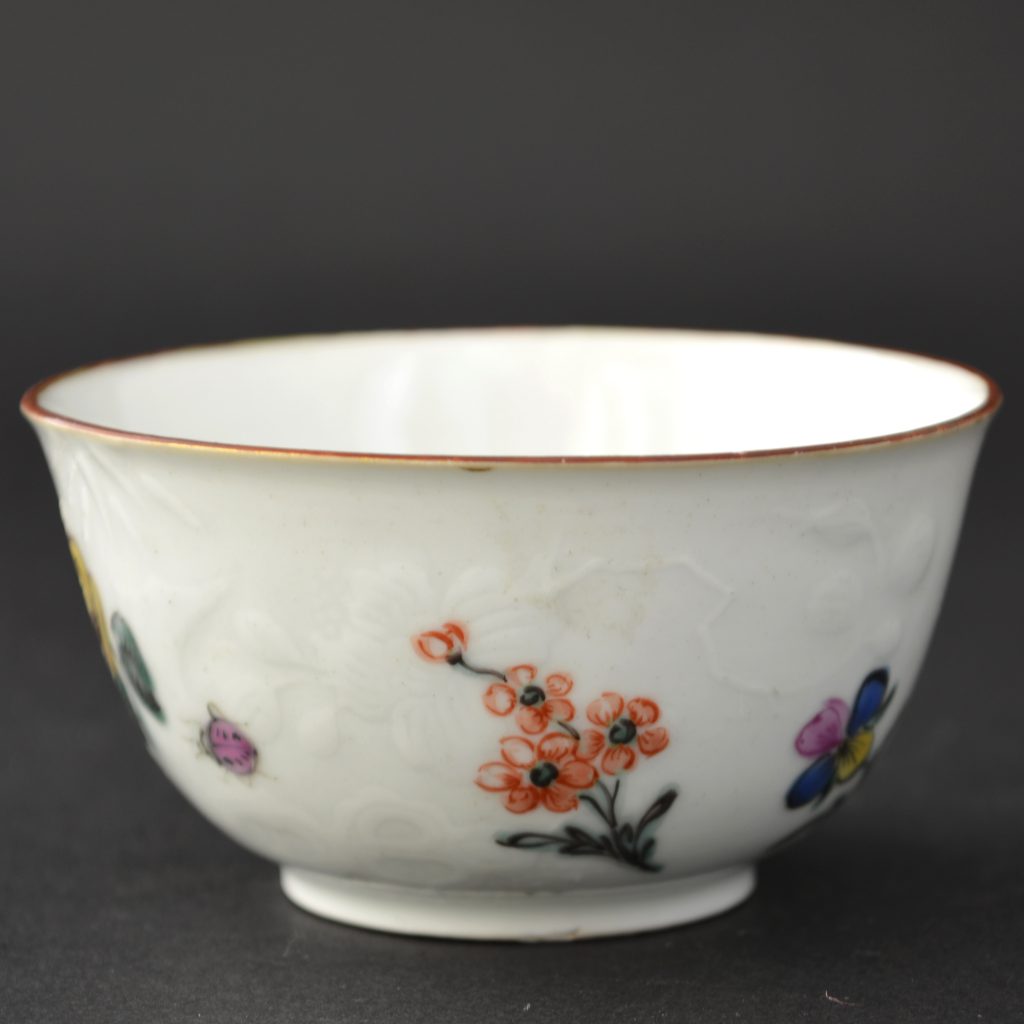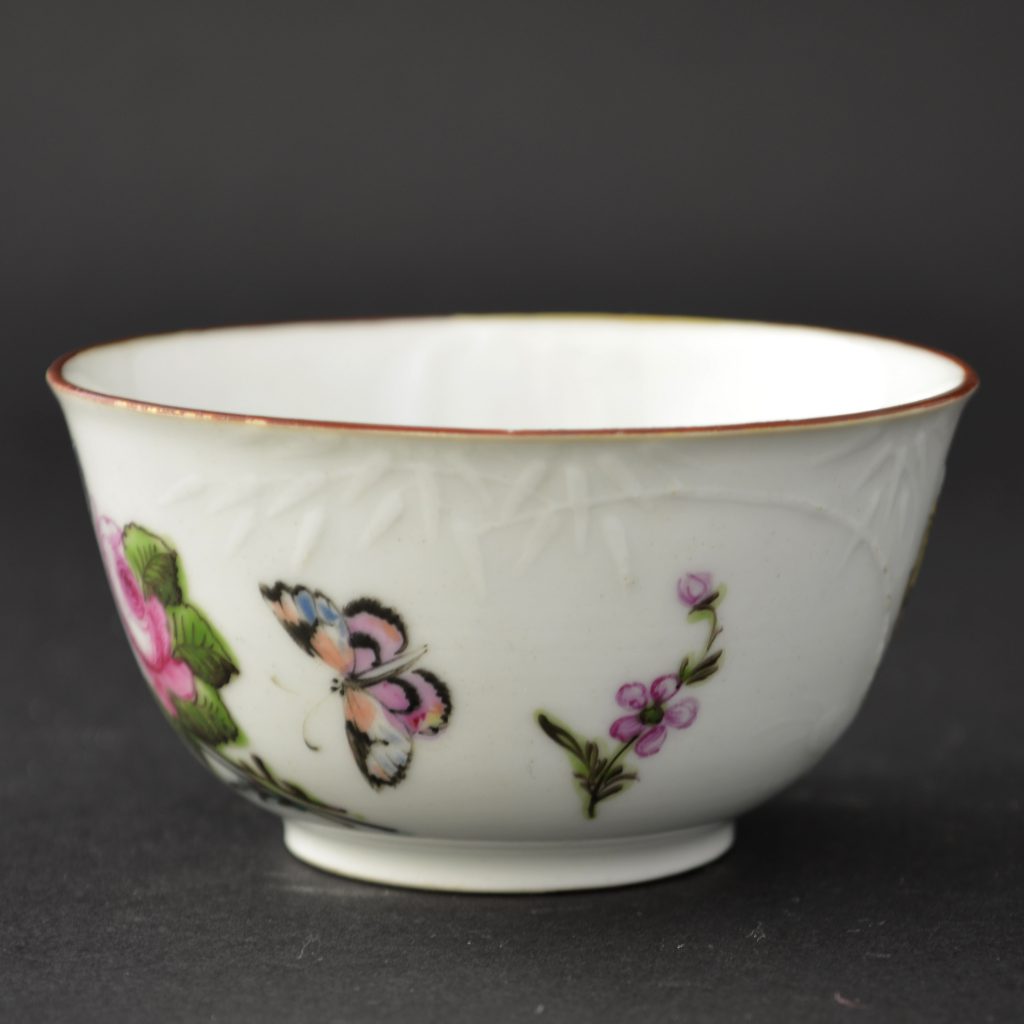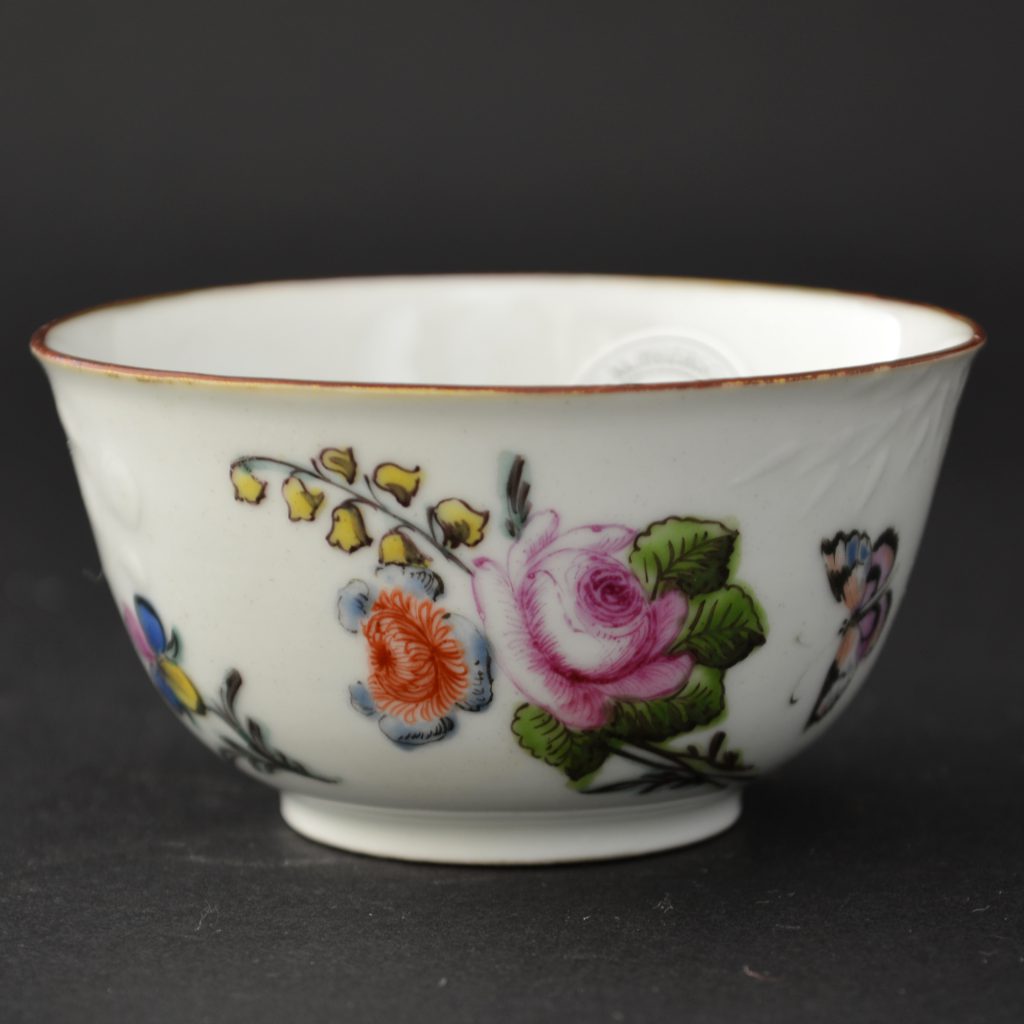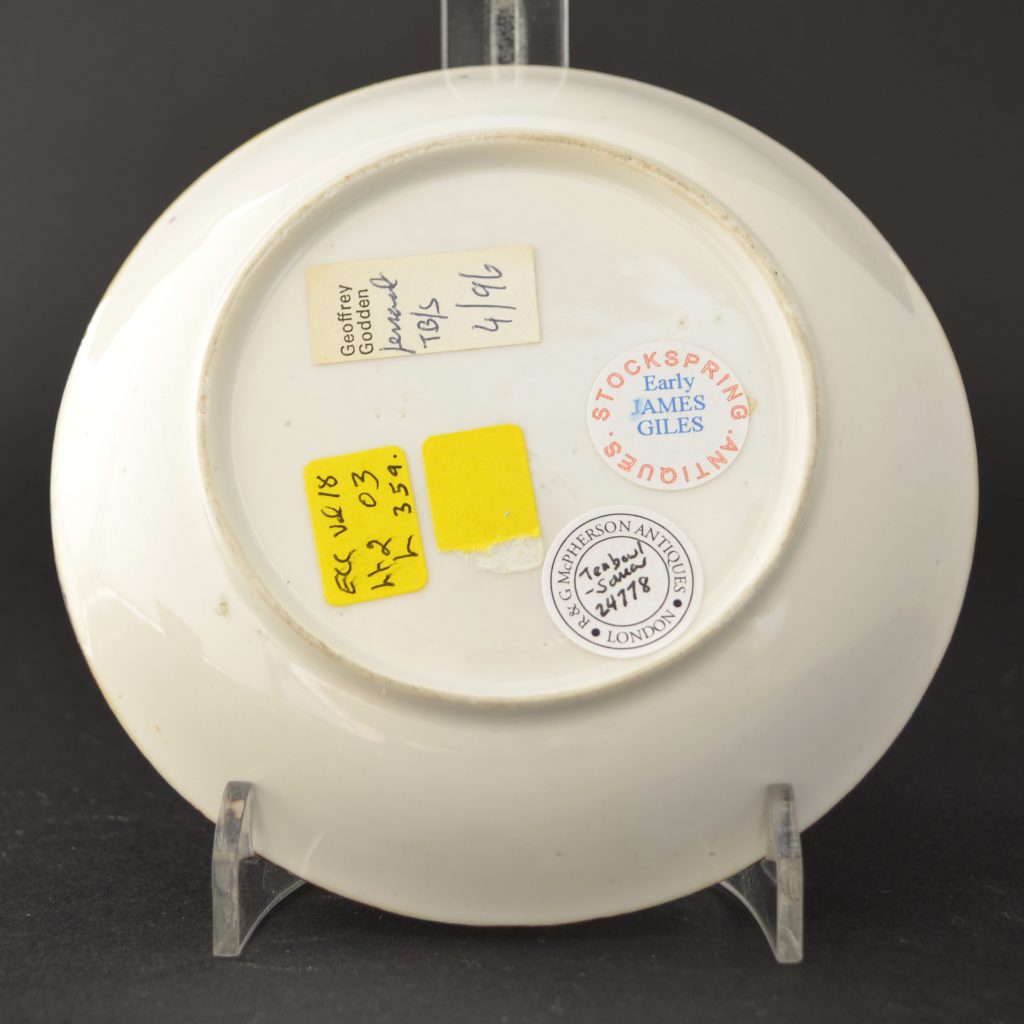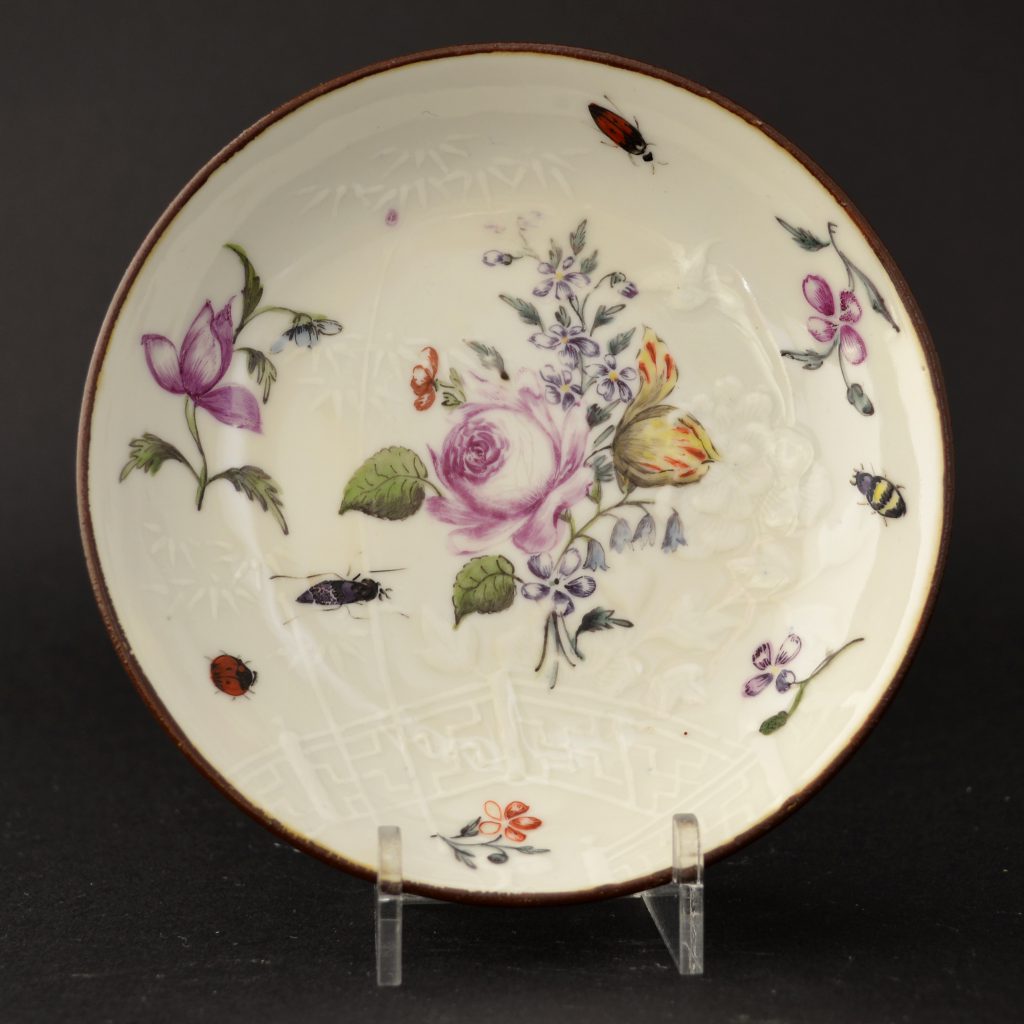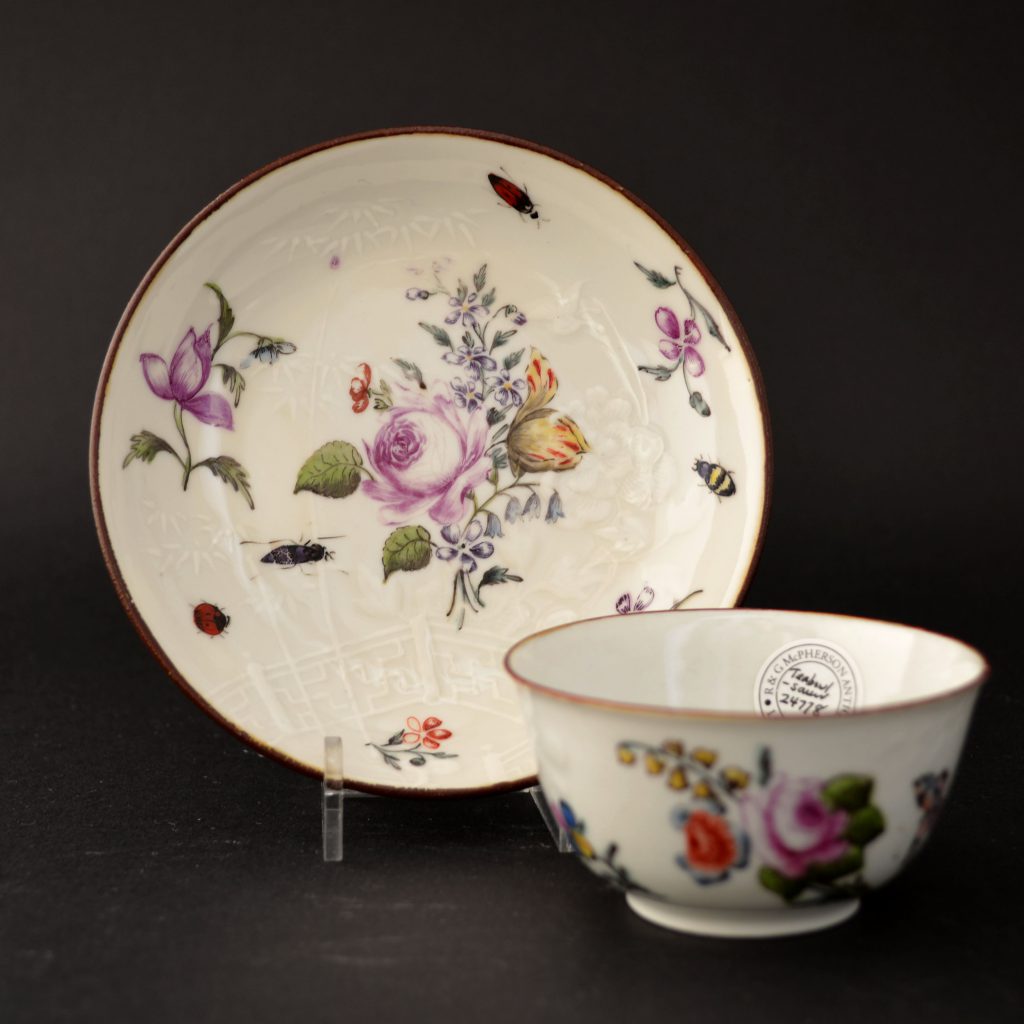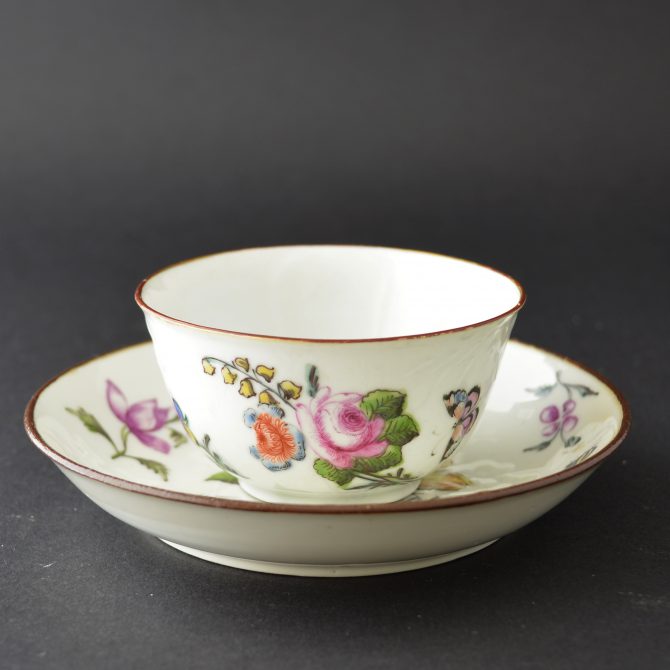
A Chinese Soft-Paste Porcelain Teabowl Enameled in London c.1755 – 1765
A London decorated Chinese Export Porcelain teabowl and saucer, soft-paste porcelain with a moulded design c.1750-1760, Enamelled in London between c.1755-1765. The plain Chinese Export Porcelain was painted in London, probably not by James Giles workshop but another workshop in London. with a Large Sprig of English Flowers, and Further Scattered Flowers.
SOLD
- Condition
- In excellent condition, very minor rubbing to the center of the saucer.
- Size
- Diameter : 11.5 cm (4 1/2 inches)
- Provenance
- The Godden Collection of English-Decorated Chinese Porcelain. The great ceramic historian Mr. Geoffrey Godden says of his own collection "As I turn eighty-five and with my Biro fast running low, it seems time to pass on the smallest, the most select and probably the most interesting of my past collections-the mid-eighteenth century Chinese porcelains decorated in England for resale on the home market. The smallest of my collections because it represents a very rare class, produced within that historically-important period 1740-1760".
- Stock number
- 24778
- References
- Exhibited : The Early James Giles and his Contemporary London Decorators (Stephen Hanscombe, Stockspring Antiques. 2008)
Information
English Decoration on White Chinese Porcelain :
This type of English enamel decoration on Chinese export porcelain should be seen in a different way to what is referred to as `over-decorated` or `clobbered` porcelain. Those terms refer to Chinese porcelain that was imported into Europe as finished articles, but were either too plain for merchants to sell or their profits could be enhanced by adding enamels over the existing Chinese decoration. The present example was plain white when it arrived in England, it would not have been salable and so no merchant would have ordered it to retail. However, James Giles must have ordered allot of white porcelain specifically for decoration at his workshop in London. The shapes ordered were the lasted fashion in Europe as was the decoration he added. To my mind this makes these objects separate and distinct from other Chinese porcelain, China only provided the blank `canvas` and even that was of a form dictated to by Europe. For this reason these objects could primarily be see as English, they would have been totally alien to the Chinese.
Chinese Soft-Paste Porcelain :
Jorg States "Chinese soft-pate porcelain, which is different from European soft-paste, originated about 1700 and became popular in the second quarter of the 18th century as part of the export assortment. Unlike ordinary porcelain, it is not translucent and often has a creamy-white appearance. The glaze is often finely crackled as a result of a difference in cooling between the glaze and the body. The later is made of a white-firing clay, called huashi, 'slippery stone', the use of which is documented in the reports of 1712 and 1722 by the Jesuit Pere d'Entrecolles. As the clay was expensive, soft-paste pieces are usually small and thinly potted. They are also well-painted, as the body is particularly suitable for detailed drawing. Besides this 'true' soft-paste, there are pieces with an ordinary porcelain body and a coating of 'huashi' clay, which gives the same effect".
